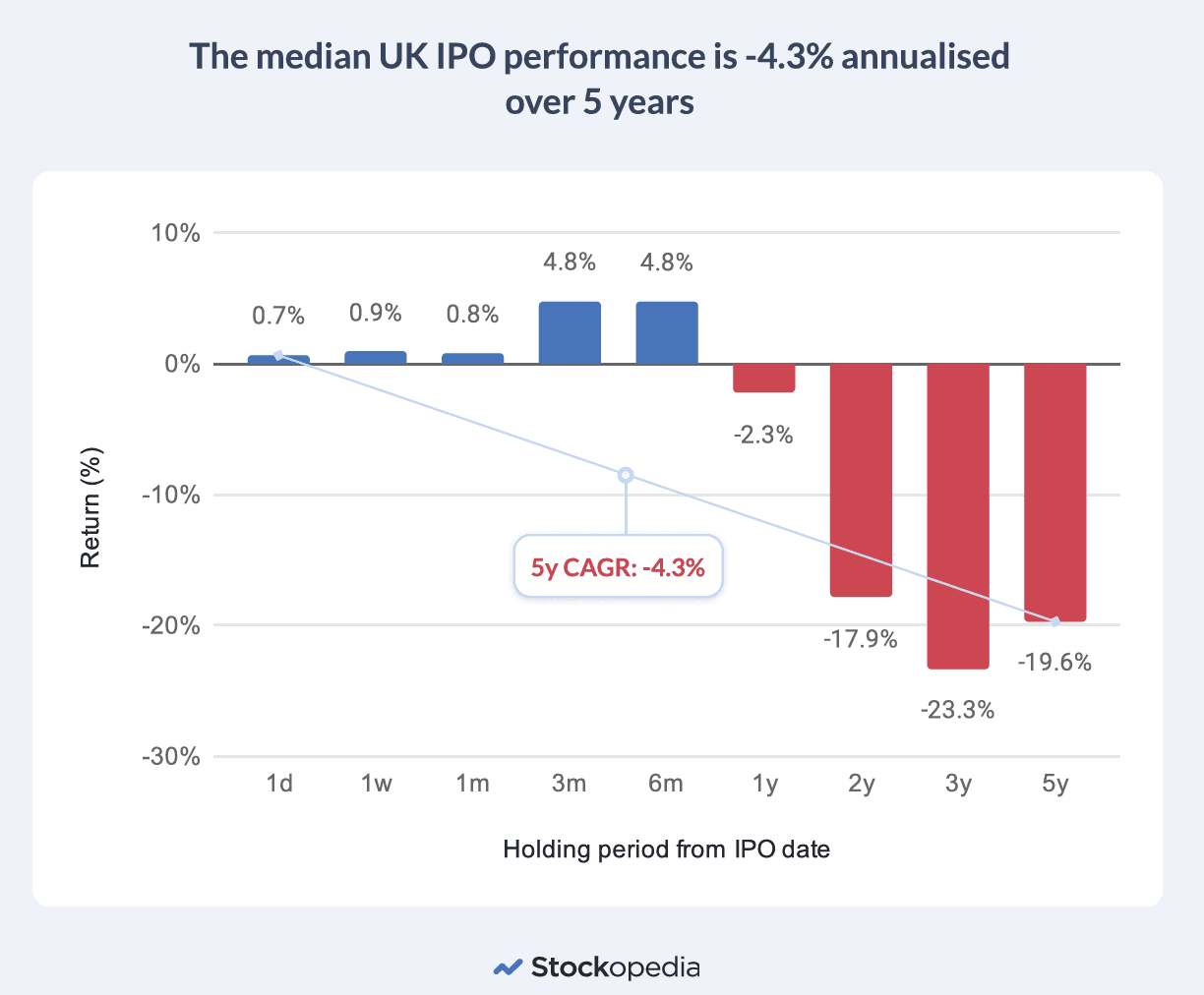What is the ideal IPO holding period?
The allure of an Initial Public Offering (IPO) is undeniable. The prospect of getting in early on the "next big thing" and riding its stock price to fortune is a powerful motivator for many investors. The media hype surrounding promising new companies adds fuel to this fire, painting a picture of an easy way to get rich quick. However, the reality for private investors is often far less glamorous.
In 2021, we conducted a research study which verified our suspicions: the IPO process is often structured to benefit institutional investors and company insiders, leaving private investors at a disadvantage.
You can read that full research report here. In this guide we'll be showing you how to put the insights we discovered into action, to help you avoid the losses that can come from buying into a disappointing IPO.
3 key statistics for IPO 'survival'
On average, IPOs tend to rise steadily within the first six months following their debut. This early momentum is largely driven by initial investor enthusiasm and buying pressure surrounding the new listing.
After six months, the average performance tends to level off, with a noticeable decline around the one-year mark, which tends to continue, reaching a low point around three-years post IPO.
A handful of massively outperforming IPOs have skewed the longer term statistics. Thanks to a a number of 'multi-bagger' companies, the average IPO return reaches 61.44% over a five year period, equating to an annualised compound return of approximately 10%.
Case Study: The IPO of Deliveroo, the food delivery company based in the UK, provides a stark example of how things can go wrong. Despite being one of the most anticipated London IPOs, its share price collapsed within its first month of listing, dropping from £3.90 to £2.28, and losing billions in valuation. This underscores the risks for private investors if they get caught up in some of the IPO hype.
Finding the optimal holding period
Private investors should always consider the role an individual company will play in their broader portfolio. Questions like: 'what is this portfolio aiming to achieve' and 'over what time period is it aiming to achieve this', are crucial.
We've split our optimal holding periods into two broad buckets:
The short-term: There is a three to six-month "sweet spot" where IPOs tend to deliver for private investors.
The long-term: Investors looking to add a newly listed company into a long term strategy might do better to wait until any hype has died down.
Approach IPOs with caution
You can dig into the statistics more in our full research report. But a key takeaway to remember is that while a select few IPOs may generate outstanding returns, most struggle, and many deliver negative results. Buying into an IPO requires sensible due diligence. A strategic, informed approach—rather than one driven by hype—will always yield the best results for investors navigating the IPO market.

